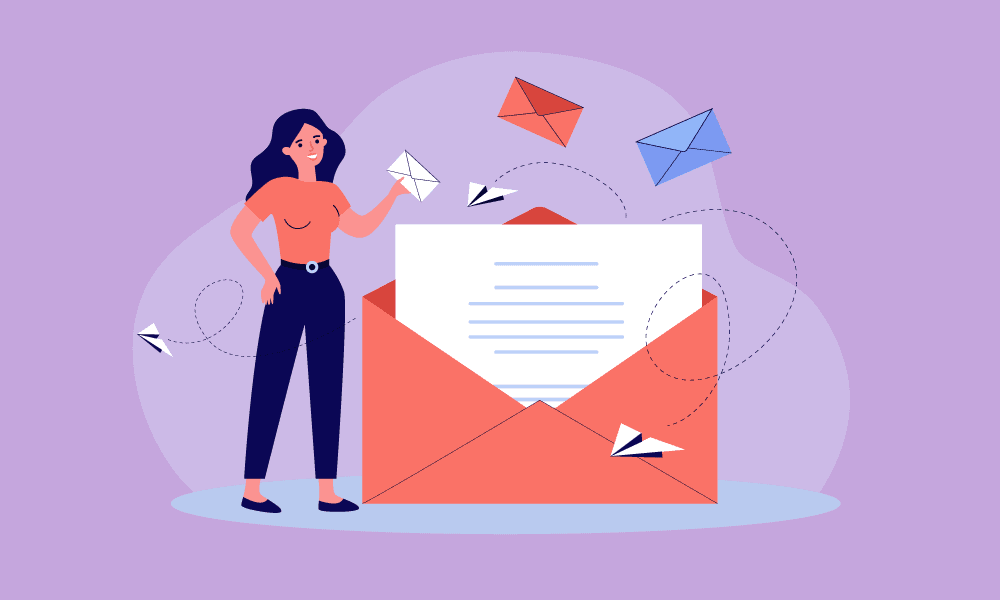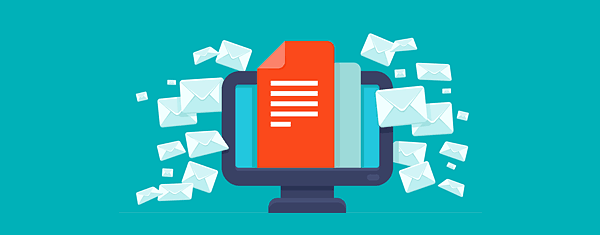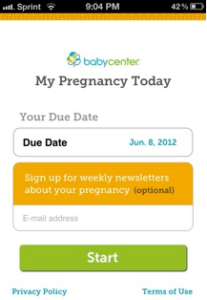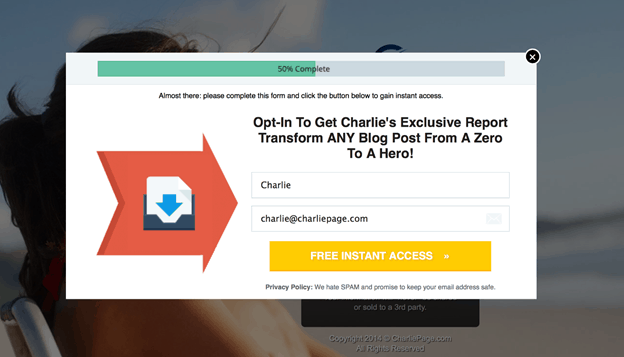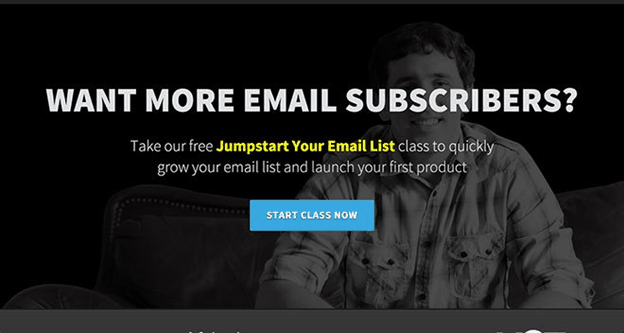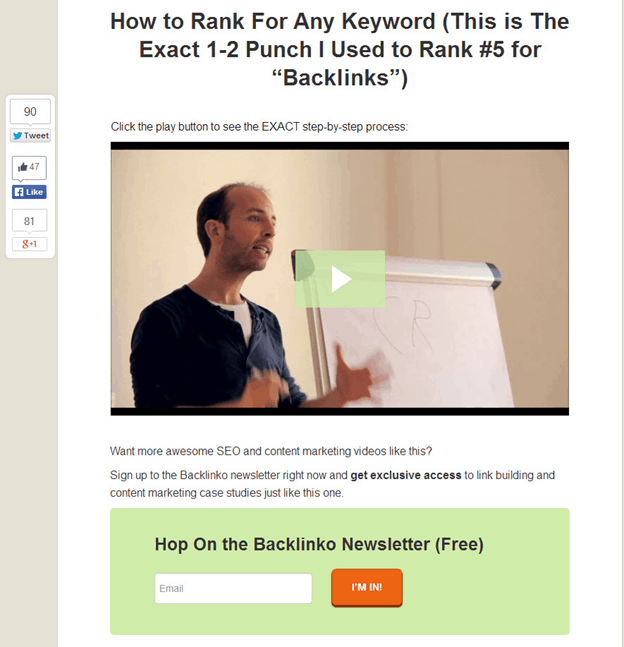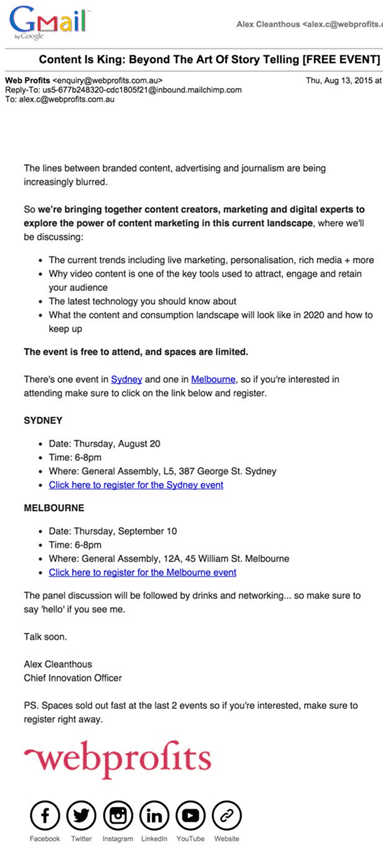Hacks are convenient, everyday tips and tricks that make our lives easier. These methods don’t just apply to our personal lives, but to our working lives, too.
For instance, everyone wishes they had a more populous email list, right? Not only do you want a huge subscriber count, but you want your audience to be active, too. After all, there’s no point in having thousands of subscribers if most of them are tuned out.
You want your subscribers to open your emails and read through them to the end. If there are links, you want your audience to click them. The end goal is to convert your leads and make more sales, and you need engaged readers to achieve this.
How do you begin growing your email list from scratch? In this article, we’ll tell you. We’re unveiling 15 of our favorite hacks so you can generate quality email lists. We’ll also have a section on growing your email list with traditional marketing, social media, and other measures.
Table of Contents
What Is an Email List?
First, just so we’re clear, let’s start with the definition of an email list or email database. An email contact list is simply all the recipients of your email newsletter. You can use an email campaign database to convert leads, retain customers, and make more sales.
Many marketers will segment the members of an email list based on different criteria. This can include demographic information, shopping and online browsing behavior, hobbies and interests, and even income or occupation. By segmenting leads or customers like this, you can send a more targeted, tailored message to each audience segment. That increases the chance of campaign success.
>>EngageBay double-opt in email, ensure high quality subscribers
How to Grow Your Email List
Want to build an email list that will have your audience members talking? Here are some tips we recommend. If you want more info, keep reading our list of 15 hacks to get more people to subscribe to your email list.
15 Hacks for a More Populous Email List
- 1. Make Targeted Email Lists
- 2. Host an Exclusive Email List Giveaway
- 3. Use Your App to Promote Email Signups
- 4. Switch to Two-Step Opt-ins
- 5. Add a Hello Bar
- 6. Transform Your Homepage Into One Big Opt-In Page
- 7. Use Referral Rewards
- 8. Make a Social Squeeze Page
- 9. Create Content Cliffhangers
- 10. Write Two-Part Blog Posts As Well
- 11. Make an Anti-Spam Policy and Share It
- 12. Let Your Subscribers Know What You’re Doing with Their Data
- 13. Try a Joint Email Campaign
- 14. Include Testimonials
- 15. Use the Content Upgrade
1. Make Targeted Email Lists
You can’t see a boost in subscribers until you know more about the ones you already have. Who are they? Where in the world do they live? What do they do for work? What are their interests? What about their pain points or problems?
Gathering this information is the first step to success. You can then organize your audience into buckets. In the future, when you send out emails to your readers, they won’t all receive the same one. The emails you send will depend on which audience category or bucket you’re appealing to.
As an example, if you’re a company based in Chicago, you’d send different emails to fellow Chicagoans versus those located in the rest of the world. Your email to Chicagoans might encourage them to come to your bricks and mortar store (as applicable). When you email people who live elsewhere, you’d push them towards doing their shopping online.
As another example that’s even simpler, let’s say you’re a bakery. For everyone who has a birthday in February, you might send them a discount if they get their birthday cake through you. You’d send other emails to your audience that don’t have birthdays in February trying to get their business, too.
2. Host an Exclusive Email List Giveaway
It’s hard to go wrong with a giveaway. Few people will turn down the opportunity to win something free. You just have to make sure whatever prize you do give out is worth a person’s while.
Here’s a case study courtesy of Neil Patel. A freelance writer named Josh Earl already had 5,500 subscribers, but he wanted more. He decided to host a giveaway, which gave the lucky winner a free license for his product. The value of the prize was about $70.
Through his contest, Earl saw an uptick in website traffic. He had 398,896 new people checking him out. A lot of them signed up to his email list, too, 187,991 of them.
Earl did heavily promote the giveaway on social media, which is integral to getting the word out. You could have the best contest in the world, but if no one knows about it, they can’t participate.
Gaining 187,991 subscribers is a pretty significant achievement. That’s all in the power of giveaways. Try one for yourself to see what your company can do!
3. Use Your App to Promote Email Signups
Does your business have an app? If you do, this could be the best way to grow email list and earn more signups.
All you have to do is add an email signup box as BabyCenter did here.
Image courtesy of BabyCenter
There are a couple of things BabyCenter did right with their opt-in box. First, they stated that it’s optional. That puts less pressure on your would-be subscribers, which could, in turn, convince them to sign up.
If that doesn’t, don’t sweat it. You just have to give your audience a good reason to become email subscribers. In the case of BabyCenter, they offered weekly pregnancy newsletters. For first-time moms navigating the exciting but often scary world of pregnancy, these newsletters are probably very much appreciated.
Whether you give your subscribers newsletter access or something else entirely, you do have to give them something. While it doesn’t have to necessarily have a high monetary value, do make sure it’s an offer worth having. You can use different email acquisition strategies on your app to build a strong email database.
4. Switch to Two-Step Opt-ins
In 2014, Leadpages’ Adam Ruhland decided to test whether single-step or two-step opt-in boxes performed better. He A/B tested both options and saw 59 percent more conversions with two-step opt-ins versus one-step opt-ins.
Here’s a visual example of a two-step opt-in if you’ve never seen or used one before.
Image courtesy of Charlie Page
Two-step opt-ins begin as a button or link that your audience member clicks. Only once they do that can they input their information, like their email address and their name.
Why do some marketers prefer two-step opt-ins versus one-step opt-ins? It shows the commitment on the part of the would-be customer. They’ve gone through the first step of opting in to get to the second step. That means they’re truly interested in joining your email list.
Does that always translate to better engagement or more customers? Not necessarily. As you saw above, though, the conversion rate on these forms can be 59 percent higher.
5. Add a Hello Bar
If you’re already using WordPress to host your website, then you might as well take advantage of the Hello Bar. According to WordPress themselves, more than 500,000 bloggers, entrepreneurs, and digital marketers have implemented the Hello Bar on their respective websites, including Neil Patel.
Image courtesy of WordPress
The Hello Bar is a simple pop-up. It can be targeted to appeal to audience segments as needed. The benefits of the Hello Bar are multiple. You could lessen bounce rates and cart abandonment, boost your list building subscriber count, and increase conversions and sales.
Since the Hello Bar is free, there’s no reason not to use it.
6. Transform Your Homepage Into One Big Opt-In Page
Admittedly, this hack is ideal if your business is anything but a service-based or eCommerce company. It’s especially good for information marketers and bloggers.
Why remodel your homepage so it’s now your opt-in page? The main answer is visibility. Is there any page on your site that gets more traffic than your homepage? Perhaps, but your homepage is definitely up there in terms of page views.
Rather than make opting into your email database a cumbersome process, the opt-in form is right there front and center. No one can miss it. All they have to do is log onto your site. That’s it. There are no pop-ups, no bars, just your homepage.
Videofruit’s Bryan Harris implemented this strategy before and enjoyed great success.
Image courtesy of Videofruit
As you can see from looking at his website, the design of your homepage must be especially clean. The black background with a black and white photo of Bryan doesn’t detract from the opt-in button. To make the button stand out, it’s a vivid blue. The yellow of the “jumpstart your email list” text is complimentary. While it captures your attention, it doesn’t grab at you as much as the opt-in button does.
Keeping your homepage free of clutter is the best way for this hack to work. As mentioned, not every type of company can pull this off. If you can, then you should. You’ll certainly see more email list subscribers.
7. Use Referral Rewards
For every one of your subscribers on your email list, they all have friends, family, and coworkers. Don’t you wish you could tap into those potential audiences, too? There are plenty of ways you can go about this, and one of the simplest is by setting up a referral rewards program.
Check out what organic food company Sakara did.
Image courtesy of Sakara
If you could get a friend or loved one to sign up to Sakara’s service, you could get $50 deducted from the cost of your own fees.
As if that money off isn’t incentivizing enough, Sakara also makes it very easy to send the referral email. All you have to do is put in the email address of the friend/family/coworker and then send the email. Sakara already filled out the body of the message for you. Of course, if you wanted to change this, you could, but you could also send it as-is.
8. Make a Social Squeeze Page
How did marketing pro-Brian Dean boost the conversion rate on one of his blog pages by 21.7 percent? He used social squeeze pages.
What is a social squeeze page? It’s a page that’s devoted to a specific topic. It features an opt-in form as well as social sharing buttons. Here’s Brian’s social squeeze page:
Image courtesy of Backlinko
As the image shows, Brian’s page is about keyword ranking. His page includes a video, a few lines of copy, and then a big, orange opt-in button. He’s offering you more great content if you sign up for his newsletter.
Like you would for any offer or giveaway, if you want your social squeeze page to succeed, you’re going to have to promote it. There’s a reason this is called a “social” squeeze page, after all. Whether you rely on Hello Bar, social media advertising, or good, old-fashioned free promotions on your social media accounts, make sure you get the word out there that this page exists. That should give you the email subscribers your company craves.
9. Create Content Cliffhangers
Thus far, our tips have been about how to attract people to your email list, not the content of the emails itself. This hack is more content-centric. If you’ve read this blog, then you’ve likely heard of the Content Cliffhanger before.
A content-writing technique attributed to Acquire Convert, the Content Cliffhanger is a means of writing that can boost your conversion rate by up to three percent (or more!).
When you watch a TV show or read a comic, they will often end on cliffhangers. These are unresolved stories that are usually paused at the most dramatic point. You want to know what’s going to happen to your beloved characters right now.
However, you can’t. You have to wait. While sure, TV binging means we can often see whole seasons in one sitting, that’s not true of all TV shows. If you’re a comic reader, you have to wait the requisite week or so to see the cliffhanger play out in full.
Acquire Convert refers to this compulsive need to see the ending as the Zeigarnik Effect. Here’s what that effect means: “when a story or a piece of information is started but not finished, our brain then retains the information, pushing it into our conscious mind until the story is complete. It seems to be human nature to finish what we start, and if it’s not finished, we can’t forget it.”
Now, you’re a real person, not a comic book or TV show character. How do you get your audience to care about you as much as they do these fictional people? It’s all about how you write. Besides Content Cliffhangers, your email newsletters should feel very personalized. The sense of one-on-one intimacy lets your readers form a personal bond with you.
Of course then, if you start a story and leave it off right before resolving it, your readers are going to check out your next newsletter.
While you shouldn’t abuse Content Cliffhangers too often, they’re a good content effect to throw in your newsletters every now and again.
10. Write Two-Part Blog Posts As Well
If you like the Content Cliffhanger idea, then you’ll love two-part blog posts.
This is a hack that’s much in the same vein if you do it right. The goal here is to publish a single part of the two-part post on your site. Then include an opt-in form in the middle of the blog asking people to sign up. If they do, they get to read the second part of the post.
If you write blog content as well as you do Content Cliffhangers, you can create compelling copy that people will gladly sign up for. The thing about writing these posts is you have to have a reason to break them up into two parts. You must choose engaging, evergreen topics that people will want to read about at length. By peppering in case studies, graphics, stats, and other data, you’ll create a great two-part resource.
It’s possible to see conversions of as much as 15 percent in some instances. You could also net well over 600 subscribers.
11. Make an Anti-Spam Policy and Share It
No one likes spam emails. They get caught by most email filters today and sent straight to the trash. You probably don’t like spam either, so make sure you let your audience know how you really feel about it.
You can do this by creating an anti-spam policy. This should be an official statement that appears in all your emails and other correspondence with leads and customers. You’re essentially saying that you will never sell your audiences’ respective email addresses. You also won’t send them spam. Mention how all emails sent from you are completely secure.
You could send out a brief email letting your audience know of your anti-spam policy. You could also mention it on social media or even in a blog blurb. By informing your customers that you prioritize and value their inboxes and what goes in them, you could see a bigger email list.
12. Let Your Subscribers Know What You’re Doing with Their Data
Back in April 2018, we informed you of the General Data Protection Regulation or GDPR right here on this blog. The GDPR is a privacy regulation that is based out of the European Union. However, any company that does business with EU clients needs to be abreast of the privacy changes.
If you remember getting a boatload of emails from all your subscriptions last summer letting you know about their updated privacy policy changes, this was because of the GDPR. Hopefully, your company did the same.
If you’re a newer company that missed the start of the GDPR enforcements (last May), you’re going to want to let customers know what you’re doing with their data. This can be a statement akin to the anti-spam policy. You want your audience to know that their privacy is paramount to you and you wouldn’t sell it to a third-party. Your emails and all correspondence from your company should be secure and safe to open.
13. Try a Joint Email Campaign
If you can find another company that’s willing to do it, you can create your own joint email campaign.
This is like a guest posting, where you write a post on someone’s site and then they write a post on yours. A joint email campaign is exclusive to email, though.
Rather than have this other company reach out to your subscribers, you format things a little differently. Here’s how ConversionXL did things when they worked with a company called General Assembly.
Image courtesy of ConversionXL
ConversionXL did all the email-writing to their audience. This prevents ConversionXL from alienating their audience before they even introduced the partnership. If General Assembly had access to ConversionXL’s email subscribers all of a sudden, this would raise major concerns about privacy and security.
Instead, in the email, ConversionXL promotes the event they collaborated on with General Assembly. Now, you know General Assembly sent out a similar email to their own audience.
If done like this, a joint email campaign can benefit not just you, but another company as well. You both get new audiences to reach out to that would have been closed off to you before.
14. Include Testimonials
Testimonials are beautiful things. These are real people willingly sharing how much your product/service has transformed their lives for the better. It’s the kind of social proof you need to bolster your campaigns and see more email signups and conversions.
Where you put the testimonials on your page matters. Try including them below your opt-in form. After all, nothing convinces reluctant people to subscribe more than others who did and had a great experience from doing so.
15. Use the Content Upgrade
We couldn’t end this post without talking about content upgrades. This is upselling at its finest. In an article on your blog, you ask your reader for their email address so they can get even better content.
The content upgrade is always related to the topic at hand. If you’re writing a blog post about user privacy, then maybe your content upgrade would be a resource list on ensuring your company is in compliance with the GDPR.
The best place for content upgrades is on your most popular pieces of content. You can go back and retroactively add a content upgrade and leave the post-as-is. You can also rewrite the post so it’s more current. Either way, make sure you share the page to attract attention to the content upgrade.
You could see a conversion rate up to 10 percent, which is not too shabby at all.
Conclusion
Is your email list subscriber count lower than you’d like it to be? Do you wish you could get more subscribers but you aren’t sure where to start? Whether you implement all 15 of these hacks or even just a few, you should have more people eagerly join your email list. The best part is they should be in for the long haul.
There’s lots of advice out there on email marketing. Here are a few resources to check out:

